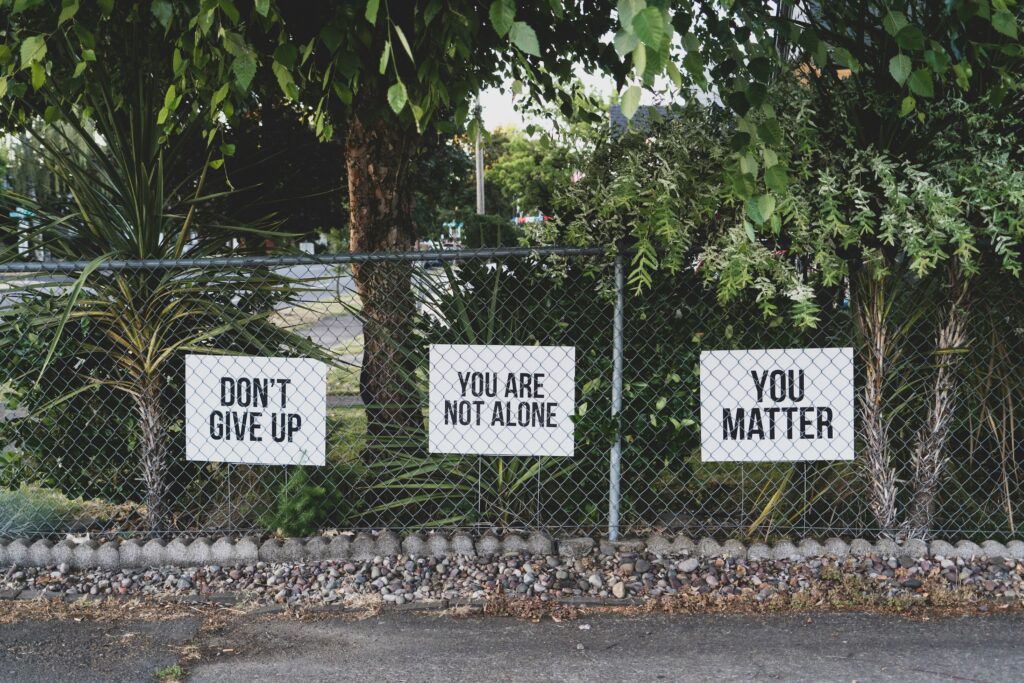In a world that moves at breakneck speed, where we are constantly bombarded with information, obligations, and stress, finding peace can feel like a distant dream. The pressures of modern life often leave us feeling overwhelmed, anxious, and disconnected from ourselves. This is where mindfulness comes in—a practice rooted in ancient traditions, now embraced by modern science for its powerful effects on mental wellness. Mindfulness is the art of being fully present, aware of where we are and what we’re doing, without feeling overly reactive or overwhelmed by what’s going on around us.
Integrating mindfulness into your daily routine isn’t just about relaxation—it’s about fostering emotional well-being, reducing stress, and cultivating a deeper connection with yourself and the world around you. This article will explore the importance of mindfulness in everyday life, highlighting key practices such as meditation, journaling, and mental health routines that help maintain emotional balance and inner peace.
The Importance of Mindfulness in Everyday Life
Mindfulness is the practice of paying attention, on purpose, in the present moment, and without judgment. It sounds simple, but the impacts are profound. Research has shown that mindfulness can reduce anxiety, lower blood pressure, improve concentration, and even increase the brain’s ability to regulate emotions.
One of the most compelling reasons to practice mindfulness is its ability to break the cycle of stress and anxiety. When we are not mindful, our minds often dwell on past mistakes or future worries, creating a constant loop of stress. Mindfulness helps us ground ourselves in the present, reducing the emotional weight we carry and helping us navigate life’s challenges with greater clarity and calmness.

Key Benefits of Mindfulness
- Stress Reduction: One of the most immediate and noticeable effects of mindfulness is its ability to reduce stress. By focusing on the present moment, we are able to let go of worries about the past or future, creating mental space for calm and relaxation.
- Improved Emotional Regulation: Mindfulness strengthens our ability to observe our emotions without becoming overwhelmed by them. This awareness helps us respond to situations more thoughtfully, rather than reacting impulsively.
- Better Focus and Concentration: Regular mindfulness practice improves our ability to stay focused on tasks, even in the face of distractions. It sharpens our attention, making it easier to stay on track during work or daily activities.
- Enhanced Self-Awareness: Mindfulness encourages us to tune into our thoughts, feelings, and bodily sensations, fostering a deeper understanding of ourselves. This heightened self-awareness allows us to identify our emotional triggers and habits, paving the way for positive change.
- Increased Compassion: As we become more present and aware of our thoughts and actions, mindfulness often leads to greater empathy and kindness toward ourselves and others. This compassion is key to cultivating more meaningful relationships.
Daily Habits for Cultivating Mindfulness and Mental Wellness
Achieving mental wellness through mindfulness isn’t about major life overhauls; it’s about integrating small, consistent habits into your daily routine. Here are some simple yet effective practices to cultivate inner peace.
1. Meditation: The Foundation of Mindfulness
Meditation is one of the most well-known and effective mindfulness practices. It involves sitting quietly, focusing on your breath, and allowing thoughts to come and go without judgment. While there are many forms of meditation—such as focused attention, loving-kindness, and body scan meditation—they all share the common goal of anchoring you in the present moment.
How to Get Started:
- Set a Time and Space: Designate a quiet, comfortable space for your meditation practice. It doesn’t need to be elaborate—just somewhere you can sit undisturbed. Start with short sessions, such as 5-10 minutes, and gradually increase the duration as you become more comfortable.
- Focus on Your Breath: Close your eyes and bring your attention to your breathing. Notice the sensation of air entering and leaving your body. If your mind begins to wander, gently guide it back to your breath without frustration.
- Let Go of Judgment: There’s no such thing as a “perfect” meditation. Your mind will wander, and that’s okay. The goal is not to clear your mind of all thoughts but to become aware of them and gently return to the present.
Benefits: Regular meditation practice has been shown to reduce stress, improve emotional regulation, and even rewire the brain’s pathways to promote long-term mental well-being.

2. Journaling: A Path to Mental Clarity
Journaling is another powerful mindfulness tool that allows you to process emotions, clarify thoughts, and reflect on your experiences. Writing down your thoughts helps to organize them, making it easier to understand what’s going on in your mind.
How to Get Started:
- Set Aside Time: Try to journal at the same time each day, perhaps in the morning or before bed. This creates a routine and ensures you make time for reflection.
- Start with Gratitude: Begin by writing down three things you’re grateful for. This simple exercise shifts your mindset to a positive frame, making you more aware of the good things in your life.
- Free Write: Don’t worry about grammar or structure. Just let your thoughts flow onto the paper. Write about your feelings, experiences, challenges, and goals. This practice helps you gain insight into your emotional state and can often lead to breakthroughs in self-awareness.
Benefits: Journaling fosters mindfulness by allowing you to be present with your thoughts. It also helps you process emotions, reducing mental clutter and promoting emotional clarity.
3. Mindful Breathing: A Quick Reset
One of the simplest yet most effective mindfulness practices is mindful breathing. You can do it anytime, anywhere. Whether you’re feeling anxious at work, frustrated in traffic, or overwhelmed at home, mindful breathing allows you to reset your mind and bring yourself back to the present.
How to Practice Mindful Breathing:
- Pause and Focus: When you feel stressed or distracted, pause for a moment. Close your eyes, if possible, and take a deep breath in, followed by a slow exhale.
- 4-7-8 Breathing Technique: Inhale through your nose for 4 seconds, hold for 7 seconds, and exhale slowly through your mouth for 8 seconds. This technique helps calm the nervous system and reduce feelings of anxiety.
- Scan Your Body: As you breathe, bring attention to different parts of your body. Notice any tension or discomfort, and imagine the breath flowing to those areas, releasing the tightness.
Benefits: Mindful breathing can instantly reduce stress, increase focus, and bring a sense of calm and relaxation to your day.

4. Mindful Movement: Bringing Awareness to Physical Activity
Mindfulness isn’t just about sitting still—it can also be incorporated into physical activities. Whether you’re walking, doing yoga, or even washing the dishes, bringing your full awareness to the task at hand turns it into a mindful practice.
How to Practice Mindful Movement:
- Walking Meditation: As you walk, focus on the sensation of your feet touching the ground, the movement of your legs, and the rhythm of your breath. Walk slowly and deliberately, staying present with each step.
- Mindful Exercise: During any form of exercise, whether it’s yoga, swimming, or strength training, pay attention to your body. Notice how your muscles feel, how your breath moves through your body, and how your mind responds to the effort.
- Engage Your Senses: When engaging in daily activities like cooking or gardening, try to fully immerse yourself in the experience. Focus on the smells, textures, and sounds, rather than letting your mind drift to worries or distractions.
Benefits: Mindful movement connects your mind and body, reducing stress and helping you stay present during physical activities.
5. Create a Mental Health Routine
A consistent mental health routine can keep your emotional well-being in check. Just like physical exercise strengthens your body, regular mental health practices nurture your mind.
How to Build a Mental Health Routine:
- Set Daily Intentions: Every morning, take a moment to set a mindful intention for the day. It could be as simple as “I will stay present” or “I will approach challenges with patience.” This sets a positive tone for the day ahead.
- Unplug Regularly: In our digital age, constant connectivity can be draining. Set aside time each day to unplug from technology—whether that’s a few hours in the evening or one tech-free day each week.
- Self-Compassion Practice: We often speak to ourselves in ways we’d never speak to a friend. Practice self-compassion by being kinder and more patient with yourself. When you catch negative self-talk, pause, and replace it with words of encouragement.
Benefits: Building a mental health routine fosters resilience and emotional balance, helping you navigate life’s ups and downs with greater ease.
Mindfulness as a Daily Practice for Mental Wellness
Mindfulness is not a quick fix—it’s a lifelong practice that nurtures mental wellness by helping us stay present, reduce stress, and cultivate inner peace. By incorporating mindfulness habits like meditation, journaling, mindful breathing, and movement into your daily routine, you can create a life that feels more centered, balanced, and aligned with your true self.
In the hustle and bustle of everyday life, mindfulness offers a sanctuary of calm. It’s a reminder that peace isn’t something you need to chase—it’s already within you, waiting to be cultivated through intentional living. As you commit to mindfulness, you’ll find that cultivating inner peace isn’t just a practice—it’s a way of life.











